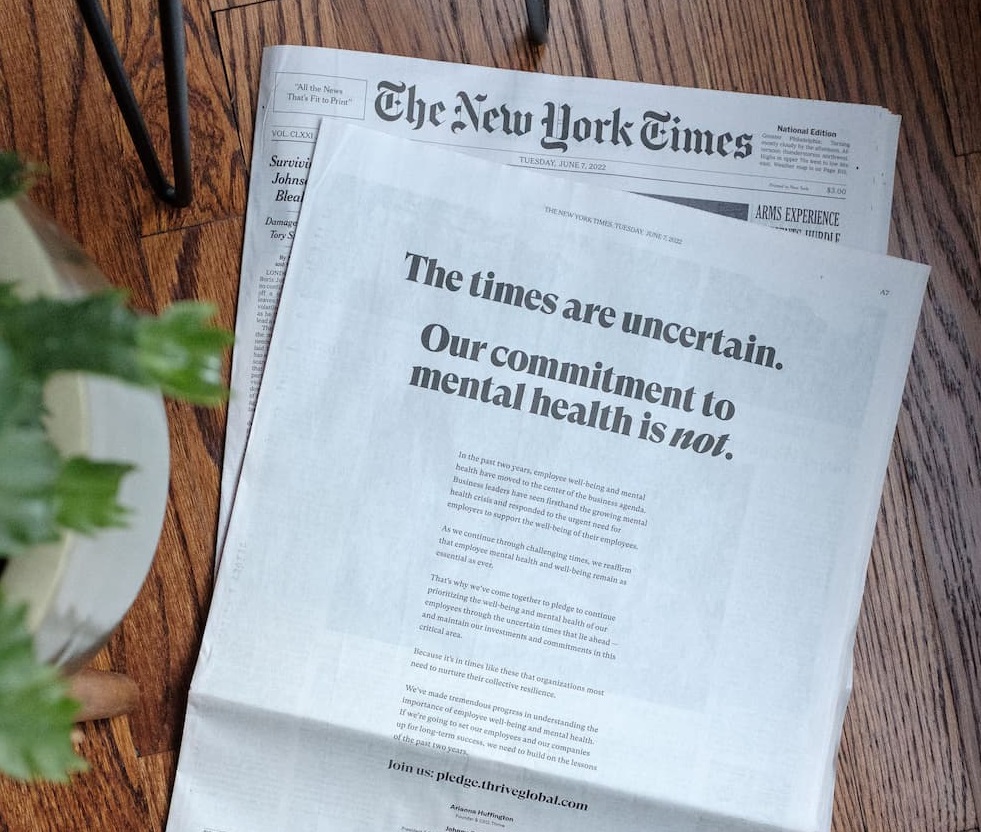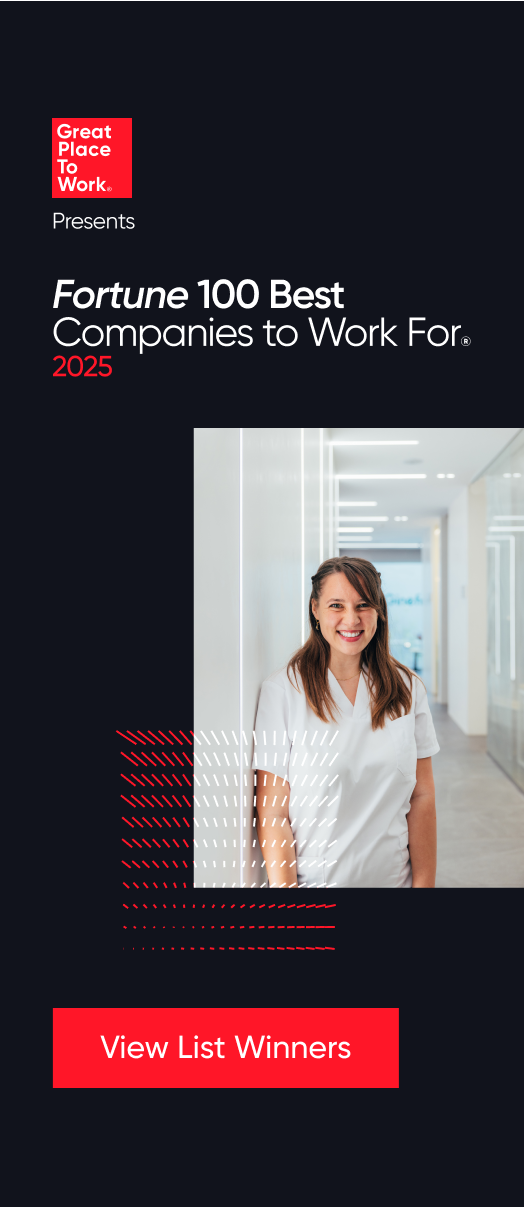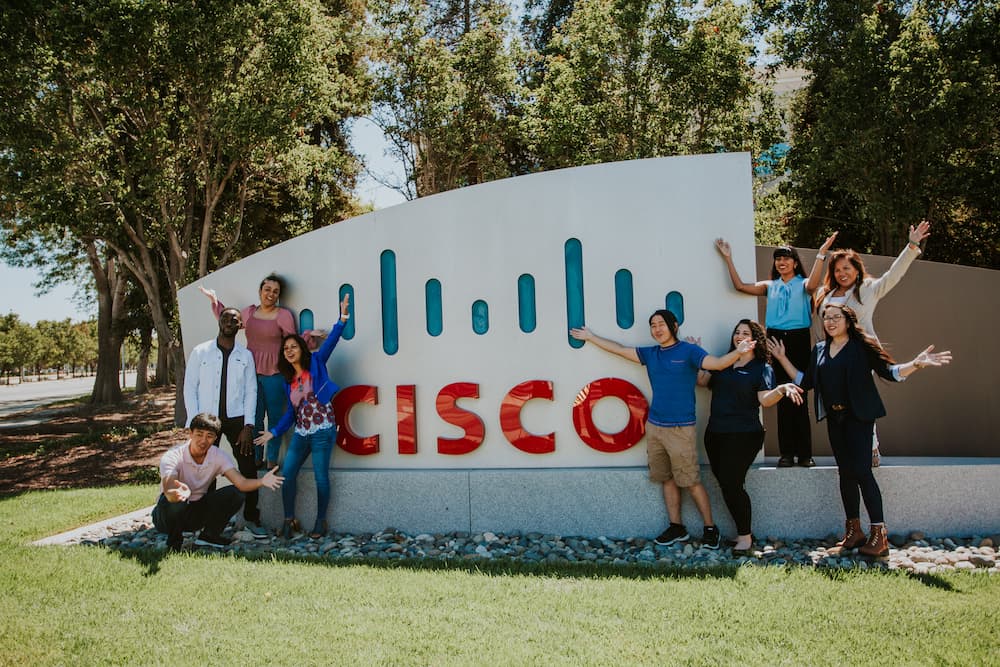Employee Experience, Employee Well-being
The founder of Thrive Global urges employers to publicly commit to mental health support and swap work-life balance for ‘work-life integration.’
Arianna Huffington has championed well-being for many years through her bestselling books “Thrive” and “The Sleep Revolution,” and behavior technology company, Thrive Global, whose mission is to end the burnout epidemic.
But she wants us to stop talking about “work-life balance.”
“The problem with ‘balance’ is that it’s based on the idea that work and life, well-being and productivity, are on opposite sides,” she says. “But, in fact, they’re on the same side, so they don't need to be balanced. They rise in tandem — increase one and you increase the other, which is what the science clearly shows.”
That’s why, she says, we should strive for “life-work integration” because “we bring our whole selves to work.”
“It’s about rejecting the idea that we should have to choose between being successful at work and successful in other parts of our lives,” Huffington says.
“The problem with ‘balance’ is that it’s based on the idea that work and life, well-being and productivity, are on opposite sides. But, in fact, they’re on the same side, so they don't need to be balanced."
What else can we do? Replace “work-life” with “life-work.”
“While work is obviously important and can give us purpose and meaning in our lives, it shouldn’t take the place of life,” she says. “Work is a part of a thriving life, but life should come first.”
Making a pledge
Workplace burnout took center stage during the pandemic, and while many business leaders supported employee mental health and wellness, Huffington wants them to uphold those commitments during tougher economic times where cost-cutting is commonplace.
To hold employers accountable, Thrive Global, in partnership with the Society of Human Resource Management (SHRM), launched a full-page ad in The New York Times on June 7 with 80 companies who pledged: “The times are uncertain. Our commitment to mental health is not.”
SHRM will connect with participating employers to develop a set of best practices to share with other organizations in an annual report, as well as compile feedback from employers in a “State of the Pledge” report in June 2023 that will highlight progress made. (Check out the nine well-being programs from the Fortune 100 Best Companies to Work For ®.)
Since the launch, the pledge has had over 1,700 additional signatories from Fortune 50 businesses to high-growth start-ups.
“A public pledge shows greater commitment and holds a company and its leaders accountable to the employee base,” Huffington says.
It’s also good business. Employees who experience high levels of well-being are three times more likely to intend to stay with their employer, and recommend their employer to others, according to Great Place To Work® research.
“Employers began to recognize the reality that investing in employee mental health and well-being isn’t just a perk, or a nice to have, it’s a mission-critical business strategy,” Huffington says.
Huffington shared her thoughts with Great Place To Work on why and how employers should show up for their employees:
GPTW: What do companies get wrong when it comes to supporting employees’ mental health?
AH: Mental health awareness has moved from the margins to the mainstream, a process greatly accelerated by the pandemic. But we need to make sure that mental health support moves beyond mental health days. Great though they are, if our work is fueling the kind of stress and burnout that leads to mental health challenges, mental health days aren’t going to be enough. The same stress and mental well-being challenges will be waiting for us on our first day back at work.
So, the question isn’t just how much time we take away from work for our mental health, it’s how to change the way we work so it supports our mental health. So, instead of siloing mental well-being into mental health days, we need to embed mental well-being solutions into the workflow itself.
“Investing in employee mental health and well-being isn’t just a perk, or a nice to have, it’s a mission-critical business strategy."
GPTW: How can employers better support their workers’ mental health?
AH: Obviously, there are going to be some people whose mental health challenges require clinical help, and employers should support employees in accessing those services and resources when they need them.
But there are also ways, in a larger sense, that employers can support mental health by making mental well-being a part of everyday work culture. It’s about going upstream to help employees manage stress and build their mental resilience.
This can mean things like creating a workplace where people don’t feel like they have to be “on” 24/7, where they’re able to say goodbye to their workday and get adequate sleep, and where they don’t feel like they have to choose between being successful at work and successful in other parts of their lives.
It’s about taking a whole human approach to mental health and well-being and supporting employees in all aspects of their lives, and not just at work.
GTPW: The pandemic taught us that we don’t have to be in the office to work, but why is being together important? How can we find ways to collaborate that don’t involve being in the office five days a week?
AH: Yes, as we move forward into a hybrid world, we need to find ways to rebuild the social capital that we accrued more naturally in the in-person, pre-pandemic world. That means replacing serendipitous connection with new, intentional rituals. It might seem paradoxical to be deliberate about creating serendipity, but this is the only way to create the space and seed it with elements that can spark human connection.
Thrive Reset is one of these hybrid tools — it’s based on neuroscience that shows that we can course-correct from stress in just 60 to 90 seconds. You can create your own personalized Reset by selecting images that bring you calm and joy — your children, pets, landscapes — as well as quotes that inspire you and music you love.
At Thrive, we begin each of our All Hands with a different member of our team sharing their personalized Reset. It gives us an intimate glimpse of our colleagues by being brought into their world. It’s amazing how much we can learn about each other in 60 seconds.
Onboarding is also especially important in building culture in our hybrid world. We have a new onboarding curriculum that we’ve built with Bank of America that we’re launching in September.
A powerful onboarding ritual we’ve implemented at Thrive is the Entry Interview between the new hire and their manager.
The first question is: “What’s important to you in your life outside of work and how can we support you?” Answers can involve responsibilities, like childcare or elderly parents, but also whatever gives you joy in your life that you want to make time for.
The Entry Interview is all the more important when, as is often the case, the manager has never met the new employee. And to keep their connection strong, managers and employees revisit this initial Entry Interview conversation during their regular one-on-ones.
These are ways to break out of the silos of the hybrid world, create moments of connection, and reinforce culture.
GPTW: What would you say to employers who don’t see the connection between mental health and business results?
AH: Every company is a health care company now, because every company plays an essential role in the mental health and well-being of their employee base.
It was always true, but during the pandemic it’s become crystal clear that employee mental health and well-being are directly tied to business outcomes. Companies rise and fall along with their people.
That’s why employee mental health and well-being are no longer just an HR discussion; they’re a business metrics discussion.
Sign up for our newsletter
Subscribe to the Great Place To Work® company culture e-newsletter and join 100,000+ other leaders learning how to create a great place to work.












